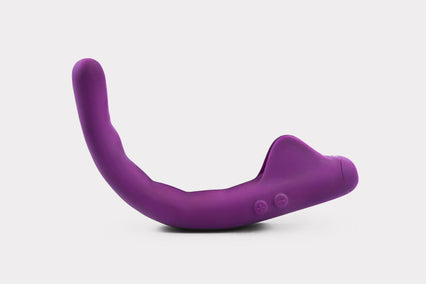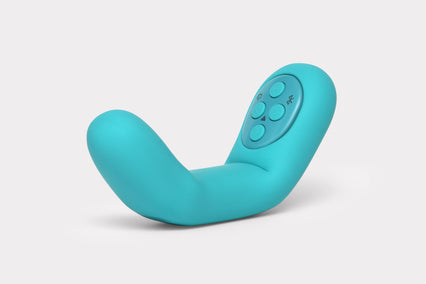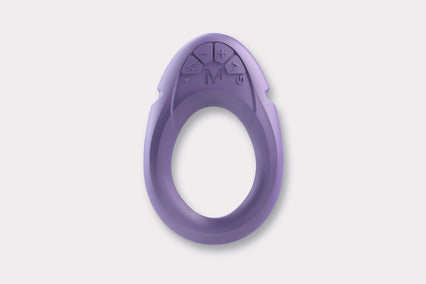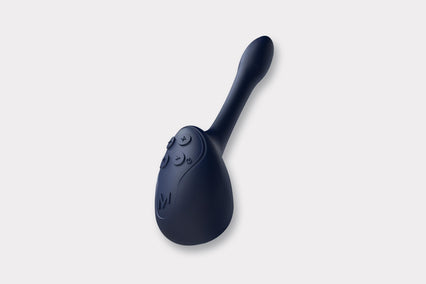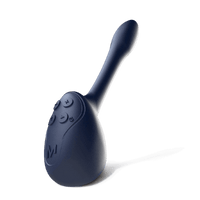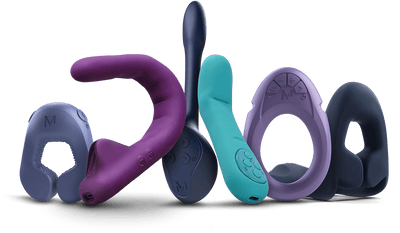Introducing Candice Smith, founder of sex education company, Two to Tango, for our weekly Sextech Salon, on The KinkKit and the importance of communication in relationships.
What is The KinkKit?
The KinkKit is the first product we have released under our sex education company, Two to Tango.
Our mission is to rebrand “sex education” for adults by making it hands-on and pleasure-based; or, as I like to call it, “Sexperiential Learning”.
The KinkKit is a sexperience box for couples designed to change, destigmatise, and open communication about sex and intimacy — by making it fun!
I call our boxes a “sexperience” because our focus is not on sex toys; rather, we start the design process around themed experiences for couples that help them create a common intimate language. We choose items to enhance the games we create — not the other way around.
We design each one of our kits around a specific theme that we want our couples to explore.
- Our first was on “Arousal”: increasing time spent on foreplay.
- Our second is on “Presence”: how to disconnect from distractions and focus in on the moment with your partner.
Every one of our boxes includes 8 printed, collectable cards with custom artwork and unique games we have designed with easy instructions to follow.
Our games have been designed to: create a common intimate language between each couple as they practice negotiating consent, identify each others’ erogenous zones, learn how to please each other, switch up their traditional “power” roles, and sexperiment with new themes!
We’ve also designed our games to take the pressure out of traditional conversations about sex and consent (which can be pretty unsexy and even stressful).
While we’ve designed and marketed The KinkKit as a sexy, fun experience for couples – there’s actually a lot of science and research behind our proprietary games! Multiple studies in education have proven the effectiveness of gamification and experiential learning in the classroom to increase engagement and learning.
We’ve taken those principles – along with other professional team-building strategies – and applied them to our games. So, our couples are adding new sexual communication strategies and language to their bedroom repertoire AND learning more about each other’s needs, wants, and limits — all while playing our “kinky” games.
What did you want to be when you were younger?
Funnily enough, I wanted to be a videogame designer. I loved watching animated movies and playing video games, and I wanted to storyboard and create video game artwork. I never lived out that dream.
My well-intentioned dad thought I wanted to be a coder and enrolled me in a C++ coding class at 12 to help me jumpstart my future career, which completely killed my desire to be a videogame designer. However, I do still design games, and I create the cover artwork and design for our cards, so in a roundabout way, I’m still living out my dream.
How did you get into sextech?
Both my personal and professional trajectories led to the foundation of Two to Tango and The KinkKit. I graduated from Harvard College with my major in Women, Gender, and Sexuality studies in 2011, a time when, frankly, apathy around feminism and women’s issues was more the norm (what I wouldn’t give to be back in those classes in 2018!).
Outside of the bubble of my sex-positive classes, there was a general consensus that women in first world countries had already achieved equality (dubious though it may have been).
The only way to eradicate the sexism (among other harmful -isms) ingrained so deeply in our society would require a total re-education of the younger population, to teach them how to avoid the wrongs of their forebears.
Armed with the resolve that education was the only way to change society from the inside out, I joined Teach for America and received my Masters in Education. During my time in the classroom, I focused heavily on increasing engagement through gamification, along with experiential and project-based learning.
Gamification uses elements of game playing (e.g., point scoring, competition with others, rules of play) to other areas of activity (such as education) to increase engagement and team-building. I later left the classroom and founded an ed-tech company educating students with these same principles.
My switch to sexual education was somewhat of a perfect storm. I’ll be the first to admit, I needed it in my early 20s. You’d think someone who got their degree in sexuality studies would know a thing or two about dating (we spoke more academically about power structures within relationships than sexual education, but still).
I didn’t know how to communicate my wants, needs, or desires, and so I often said nothing. My silence kept me from truly enjoying sex and intimacy. If something didn’t feel that great, I stayed silent. When there was discomfort or pain, I stayed silent.
My inability to speak up for myself got me into more than one non-consensual situation, where my silence was taken for “yes” and I didn’t know how to say “no”. I just kept making the same mistakes over and over again.
Sexperimentation empowered me to speak up for myself. In my studies of sexuality and relationship dynamics, I’d gained a healthy academic respect for the tenets of BDSM.
I would personally not explore these ideas myself until later in my 20s – but at the time I found the psychology of shifting power dynamics and the open communication about consent fascinating (how revolutionary, to actually talk about what you want in sex instead of diving straight into it!).

When I finally did explore those power dynamics and practiced communicating openly about consent, though, it revolutionised my entire view of sex and intimacy (and no, it’s nothing like 50 Shades of Grey).
Inspired by my new self-understanding and discovery, I was finally able to enter a healthy relationship with healthy intimacy, built on a foundation of trust and open communication. Not long after, the #MeToo movement started gaining traction. I read others’ stories, jarred by the similarities to my own prior experiences.
In so many of the stories, these women cited an inability to speak up, communicate properly about what they wanted, or even just to walk away when consent boundaries were crossed.
It became glaringly clear to me that as women we are so often socialiesed to silence our sexual limits, desires, and wants in the face of maintaining politeness, assuaging ego, or at worst, staving off violence.
Even more painfully obvious to me was how often a woman’s consent is questioned, dismissed, and not explicitly obtained — even, at times, in loving relationships. I became increasingly convinced of the need for a change in our (both women and men) communication styles and language we have internalised around female sexuality and desires. This is where sex education can be most helpful – though I knew it would have to be packaged differently for adults.
With this in mind, my partner and I founded Two to Tango, with the hope that we could help create “sex ed” products and services that use sexperiential learning to create a common language for couples, and maintain an expectation that the bedroom is a safe space where both partners can express mutual respect and love. With our prior experience, vision, and research, my partner and I designed and finally launched The KinkKit on January 1st, 2018.
What are the key trends you’re seeing at the moment that influence your work?
Several key trends that have influenced our aesthetic and game design, as well as our brand marketing:
- Self-love and body-positivity: We’re working on self-love boxes and our games encourage body-positivity
- Pushing boundaries using humour: Not only do we constantly share and create memes related to sex, but we encourage laughter and play in the bedroom. It’s a fantastic way to create intimacy.
- Beautiful presentation and fun unboxing experiences: We put a lot of thought and energy into the aesthetic appeal of our boxes, from the specific wrapping of our bows to the placement of items in the box, from the card design to the hand-poured wax seal on every box.
- Sustainability in packaging: Our magnetic-closure boxes are designed to be collected and reused as storage for items and sexperience cards.
- LGBTQ+ Inclusivity: While I definitely want to more specifically address LGBTQ+ needs in the future (and would look to collaborate with sexperts in LGBTQ+), our boxes and games are currently designed to be gender neutral, with toys that can be used by anybody with any body, and gender neutral pronouns because we want to encourage couples to try all roles (and after all, game instructions aren’t supposed to have gendered pronouns!). We do also include non-gendered body-part-specific instructions, depending on the game.
What is your vision for the future of The KinkKit?
When I worked in education, and especially in education entrepreneurship, I learned that institutional change only comes from building a strong and connected community.
This is why we are reaching out to other sextech companies, sex educators, and other influencers in the sex-positive and body-positive community that have their own niche and expertise in building sex and intimacy to co-design and co-brand KinkKits. It is my hope that we can eventually create a “library” of sexperiences to choose and learn from.
When it comes to sex, what’s the one thing you wish everyone knew?
Great lovers are made, not born – and it has less do to with sexual prowess than about open communication with your partner. Open communication about sex and desires doesn’t have to be as scary as it is made out to be.
It’s never too late to start talking about what you want or encouraging your partner to share what they want. Just try communicating with your partner about some of your desires – you may find that they’re far more receptive than you had feared.
It’s better to bite your lip in pleasure than to bite your tongue in silence.
What’s the biggest surprise you’ve had since starting to work in sextech?
It’s been a culture shock – for good. I did not expect the sextech community to have such a large and growing women-led segment, and I also did not expect that community to be quite as supportive as it is, though I am so happy to see we all try to rise together.
I recently joined the Women of SexTech, which has been a fantastic way to get to know other entrepreneurs in our field and see the incredible ventures they are working on.
Who else in the industry do you admire or look up to?
Gosh, the list is so long. I have so much respect and admiration for everyone in the industry – most who I have met through Women of Sex Tech (WOST). Polly Rodriguez, Sarah Jayne Kinney, Liz Klinger, Kris Fretz, Emily Sauer – just a few of the crusaders kicking ass and bringing conversation about women’s sexual pleasure into the mainstream. I’d name everyone in WOST if I had the list in front of me.
Choosing to be a female sextech entrepreneur means voluntarily choosing to have restricted access to social media marketing and visibility, to have campaigns shut down or rejected on the basis of “indecency”, to risk facing public censure, to be misunderstood and trivialised by investors, to be an even easier target of sexual harassment… and more. I admire these women’s bravery and am proud to stand among them.
What advice would you give someone who is looking to break into the industry?
Get prepared for an uphill slog. The movement is here and going mainstream, but we have a lot of work to do. Come join us, and don’t be afraid to reach out for support.
What wider changes do you think sextech can have or is having on society?
Sex makes up such a VAST part of our lives. It’s the very reason we exist. We all desire love and to be loved. Much of our lives is spent either searching for or being with partners.
Yet, sex-positive discussion and education is often silenced, censored, and shamed throughout most of our childhoods. We enter adulthood, embarrassed and unequipped with the tools to properly navigate dating, sex, and intimate situations.
We don’t know how to communicate our wants, needs, and desires, and so we silence ourselves. At its best, these unexpressed needs can lead to resentment, cheating, unrequited love, broken hearts — at worst, sexual violence, abuse, or assault.
While most of these traumas take place on a smaller scale, at times, this lack of sexual education can have larger societal repercussions – just look at the horrifying growth of the incel movement (for just ONE example of many).
One of the main differentiators separating humans and other living beings is our ability to create technology to solve our problems. The technologies humanity has created have revolutionised our lives on so many fronts, yet the majority of the world still has little to no sex education, and antiquated or conservative views on women, gender, and sexuality have persisted for millennia.
This is where sextech comes in. While we have our work cut out for us, I believe that sextech is starting to normalise and destigmatise conversations about sex through the products we create and services we provide to help enlighten others who have not yet had a chance to learn.
If we’re successful, we will literally change humanity.
Do you have any practical tips that someone could use tonight to enhance their pleasure?
Sure! I’ll offer a couples’ communication tip to start, and then a tip for anyone, solo or coupled.
Tip 1: Speak up with specifics about what you want and don’t want, using positive reinforcement to reward and readjust.
We respond naturally well to positive reinforcement, so speaking out when you like something will incentivise your partner to keep doing it.
Scenario: Your partner is giving you oral sex almost the way you like.
Reward first: “I LOVE what you’re doing with your tongue! It feels so amazing!”
Then Readjust: “Could you also add your fingers?”
Reward: “Yes I love it! Don’t stop!”
Scenario: Partner inexplicably and enthusiastically speeds up when hearing “don’t stop”.
Readjust: “Please keep doing just what you were doing before –”
Reward: “–it was PERFECT!”

If you’re not quite that vocal, here is another scenario:
Scenario: Your partner is giving you oral sex almost the way you like.
Reward first: “mmmmmmmmmmmmmm yes”
Then readjust: “mmmmm fingers too please”
Reward: “MMMMMMMMMM!”
And so on and so forth. Adjust as you like – experiment with what feels comfortable to you!
We love that idea! We also came up with a few more tips on how to ask for what you want in bed.
Tip 2: Do something sensory prior to physical pleasure that will get you in a “present”, undistracted headspace.
If you think back to the best sexual experience of your life, I guarantee you were 100% present, feeling all the good vibes with your partner/s, and living in the moment.
Not every sexual experience can be (or needs to be) up to that standard, but it is important to get rid of distractions before pleasuring oneself or engaging in mutual pleasure. (Hint: put away your phone).
The brain is our largest sexual organ, so indulging in relaxing activities such as mindfulness, meditation or deep breathing can help clear the mind of thoughts or reduce physical tension. Then stimulate one or more of your five senses: taking a warm bath or shower, lighting your favorite scented candle, listening to relaxing or sexy music, drinking a cup of warm spiced tea, watching or reading something arousing. Once the distractions of the day are gone from your mind and you’re feeling sexy, have fun.
(If you need help finding some good sexy music, we did create some sexy Spotify playlists to help with getting in the mood)

